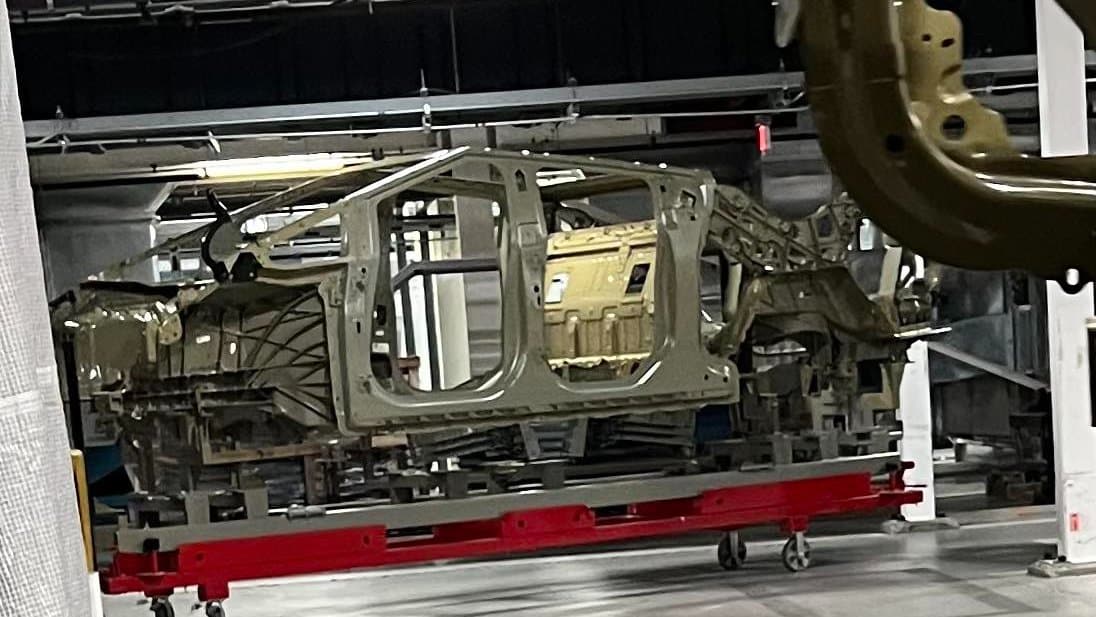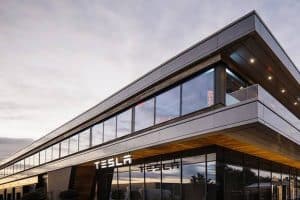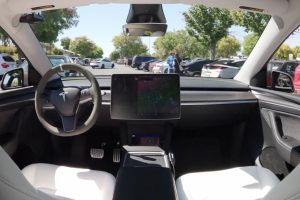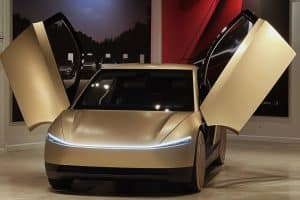A recently leaked image of the Tesla Cybertruck frame has revealed a disappointing design aspect that many owners were eagerly anticipating: the absence of a cargo tunnel extending from the bed into the cabin, which would have allowed for the transportation of long materials.
In another photograph showcasing the Cybertruck’s assembly process, it is evident that the vehicle is equipped with a practical feature: anti-corrosion coating. This is a brilliant addition, particularly considering the truck’s expected usage as a construction vehicle, where exposure to harsh environments is commonplace.
Furthermore, Tesla has expressed its intention for the Cybertruck to be able to operate in water, even serving as a makeshift boat on certain occasions. In this context, the anti-corrosion coating becomes even more valuable, as it provides vital protection against water-related damage. If owners decide to test the vehicle’s aquatic capabilities, extensive damage could occur. If left unchecked, corrosion could potentially become a fatal issue for this all-electric pickup.
Another noteworthy observation made by those studying the Cybertruck is the absence of a passageway connecting the bed and the cabin. This particular feature has captured the interest of onlookers.
Those on the Tesla Motors subreddit are disappointed to see that there is no evident passthrough in the body of the Cybertruck that would link the cabin to the bed, which eliminates the possibility of using the pickup as an overlander for camping, or for excessive space for hauling materials.
Speculation has persisted for some time on whether Tesla would include a passthrough for various applications. Of course, the final design of the Cybertruck has been seen on various occasions throughout Texas and California, but the finer details have yet to be revealed by Tesla.
Things like this design detail, in particular, are not likely to be revealed until the Cybertruck’s delivery event, which is scheduled for this quarter and will hopefully happen on time.
Tesla has been known to be aggressive with some timelines, but all evidence seems to show the Cybertruck’s initial production phases have started and the automaker is moving forward with the initial customer builds.
There are several reasons the Cybertruck may not have been the most ideal candidate for a passthrough, or midgate, as it is often called. Tesla will do things that they feel are best for the vehicle and its design, and that is our first conclusion: maybe they just didn’t want to do it.
Secondly, it could have been an engineering issue. Midgates would likely require a different build of the truck entirely, and although it is only a slight difference in design, Tesla may have had its mind set on developing the Cybertruck without one. More details could be revealed on why in the future, but it does not seem apparent at the moment.
There are no known safety issues with having a midgate, and if Tesla was hoping to win over some truck buyers with the Cybertruck, there is the possibility that the lack of one could have potential customers opting for another design. The Sierra EV Denali from GMC has one, as well as the Silverado EV from Chevrolet, but only in its most expensive configuration, which comes in over $100,000.
While we don’t expect it to be a major pain point for truck buyers that are opting for an EV, the Tesla Cybertruck lacking a midgate could be one of the few downsides of the pickup as initial deliveries near.





